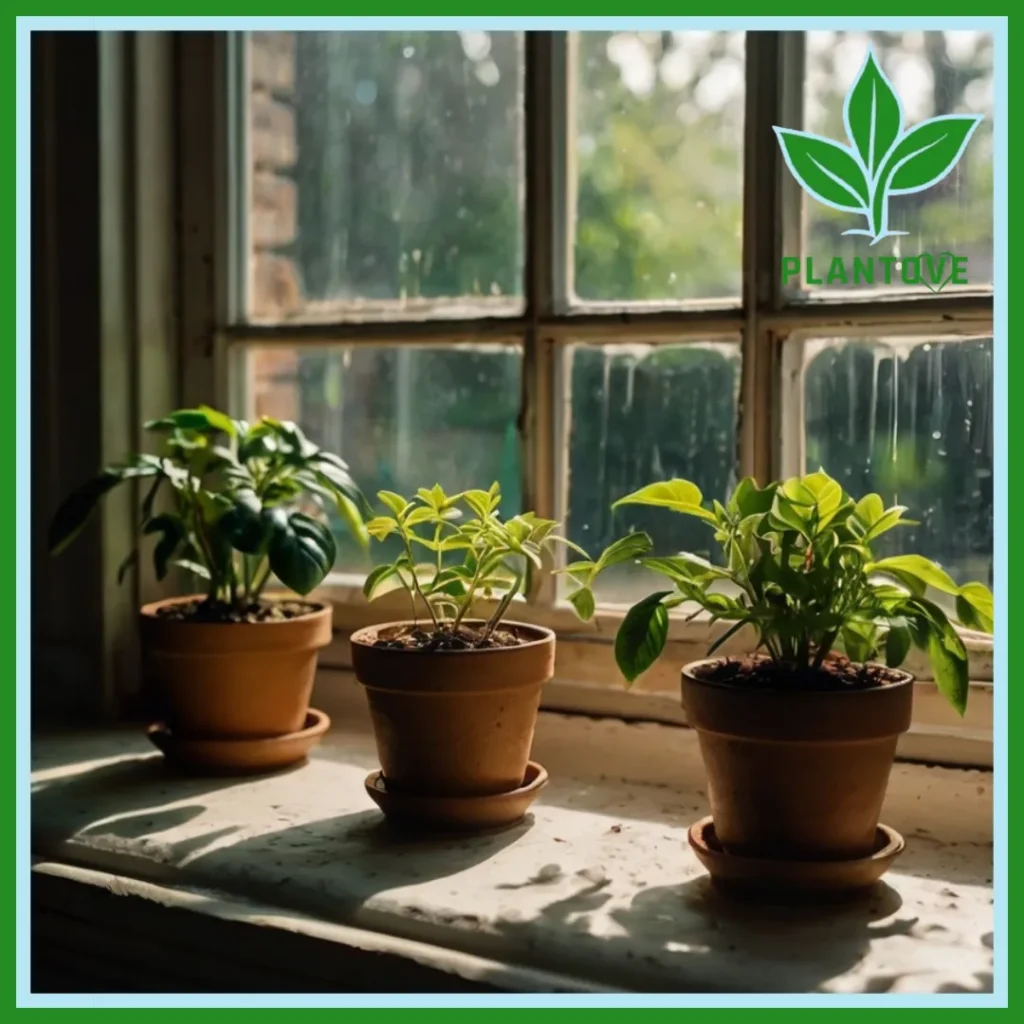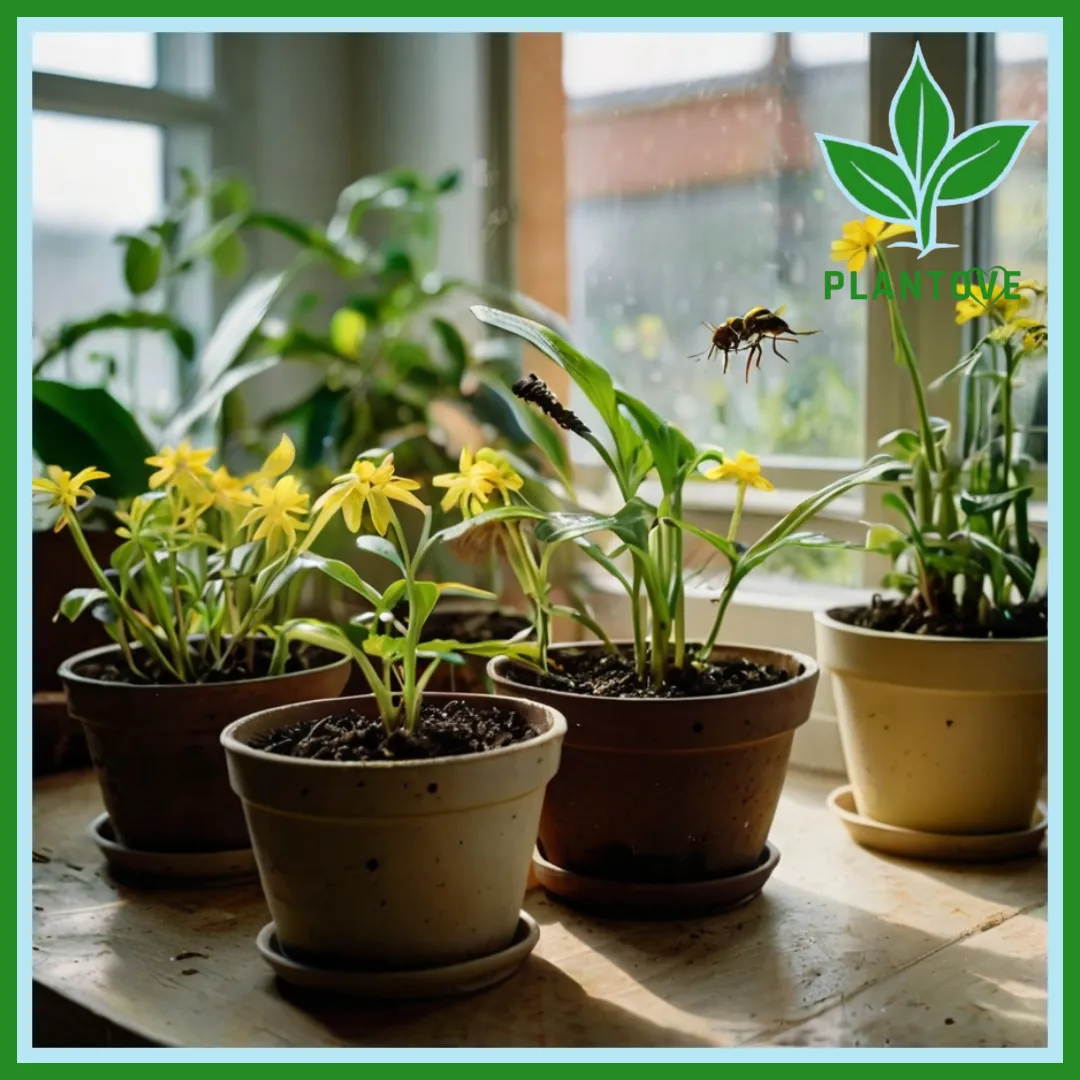Gnats can be an annoying problem for plant enthusiasts. These tiny, flying insects often invade houseplants and outdoor gardens, creating a nuisance while potentially damaging your plants. If you’re asking, “How to get rid of gnats in my plants?” you’ve come to the right place. In this comprehensive guide, we will discuss how to eliminate gnats from your plants, including natural methods and quick solutions to get rid of plant gnats fast. By the end of this article, you’ll have a range of strategies to protect your plants from these persistent pests.
What Are Plant Gnats?
Plant gnats, also known as fungus gnats, are small flying insects that are attracted to moist soil and decaying organic matter. These pests are particularly common in indoor plants where they find the perfect environment for reproduction. The adult gnats are mostly harmless, but their larvae feed on the roots of plants, which can stunt growth and, in severe cases, lead to plant death.
Why Do Gnats Infest Plants?
Gnats are attracted to damp soil and organic matter. Overwatering your plants, having poor drainage, or using contaminated potting soil can create the perfect conditions for a gnat infestation. Fungus gnats lay their eggs in the soil, and when the larvae hatch, they feed on decaying matter in the soil and plant roots, leading to damage.
How to Get Rid of Gnats in My Plants ?
Eliminating gnats from your plants requires addressing both the adult gnats and their larvae. Below are the most effective strategies to rid your plants of these annoying pests.
1. Adjust Watering Practices
One of the easiest ways to get rid of gnats in your plants is to adjust how and when you water them. Since gnats thrive in moist conditions, overwatering your plants is a common cause of infestation. Here’s how to use this strategy to your advantage:
- Let the Soil Dry Out: Gnats need moist soil to lay their eggs, so allowing the top layer of soil to dry out between waterings can disrupt their life cycle. Ensure that the top 2-3 inches of soil dry out before watering again.
- Water from the Bottom: Watering your plants from the bottom allows the roots to absorb moisture without creating damp conditions on the surface where gnats thrive. Place the plant pot in a tray of water and allow the soil to soak up water through the drainage holes.
2. Use Yellow Sticky Traps
Yellow sticky traps are a highly effective way to catch adult gnats. These traps are brightly colored and coated with adhesive, which attracts and traps flying insects. Place the sticky traps near your plants or stick them into the soil. This will significantly reduce the adult gnat population, preventing them from laying more eggs in your plant’s soil.
3. Replace or Treat the Soil
If the infestation is severe, you may need to replace the soil entirely. Fungus gnat larvae live in the top few inches of soil, so removing and replacing the contaminated soil can help eliminate them. If you don’t want to completely replace the soil, you can treat it with natural or chemical remedies that target the larvae:
- Sterilizing the Soil: You can sterilize the soil by heating it in the oven or the microwave, killing both the larvae and eggs. However, this method is mostly recommended for small amounts of soil and can be cumbersome for larger plants.
- Diatomaceous Earth: Sprinkling food-grade diatomaceous earth on the surface of the soil creates a barrier that kills larvae by dehydrating them. This natural, non-toxic solution is safe for both plants and humans.
How to Get Rid of Gnats in My Plants Naturally ?

If you prefer a more eco-friendly approach to getting rid of gnats, several natural methods are highly effective. Here’s how to tackle gnats without relying on harsh chemicals.
1. Use a Vinegar Trap
A vinegar trap is one of the most effective and natural solutions to get rid of adult gnats. The strong smell of vinegar attracts the gnats, and they become trapped in the solution. Here’s how to make your own vinegar trap:
- Ingredients: Mix equal parts of apple cider vinegar and water in a shallow dish. Add a few drops of dish soap to break the surface tension, which helps trap the gnats.
- Placement: Place the dish near your plants or where gnats are most active. Replace the solution every few days until the gnat population diminishes.
2. Hydrogen Peroxide Soil Drench
A hydrogen peroxide solution is a safe and natural way to kill gnat larvae in the soil. It works by oxygenating the soil and effectively killing the larvae without harming the plant:
- How to Use: Mix one part hydrogen peroxide (3%) with four parts water. Water your plants with this solution as you normally would, making sure to saturate the top layer of soil. The hydrogen peroxide will kill the larvae upon contact, while the remaining water will evaporate, leaving your soil clean.
3. Neem Oil
Neem oil is another natural remedy that works effectively against gnats and other plant pests. It disrupts the life cycle of the insects and prevents them from laying eggs. Here’s how to use it:
- Dilute the Neem Oil: Mix neem oil with water according to the instructions on the product label. Usually, a few teaspoons of neem oil mixed with a quart of water works well.
- Application: Spray the neem oil solution onto the soil and plant leaves. Repeat this process once a week until the gnat problem subsides.
4. Sand or Gravel Layer
Gnats lay their eggs in moist soil, so creating a barrier between the soil and the air can prevent them from reproducing. You can add a 1-2 inch layer of sand, gravel, or decorative stones on top of the soil to discourage gnats from laying eggs:
- Why It Works: The larvae won’t be able to emerge through the sand or gravel, and adults won’t have access to the soil to lay their eggs. This method is both decorative and functional.
How to Get Rid of Plant Gnats Fast ?
If you need a quick solution and can’t afford to wait for natural remedies to take effect, there are fast-acting methods you can use to get rid of gnats in your plants immediately.
1. Insecticidal Soap
Insecticidal soap is a fast and effective solution for getting rid of gnats on contact. It works by breaking down the protective outer layer of the insects, causing them to dehydrate and die. Here’s how to use it:
- How to Apply: Spray the insecticidal soap directly onto the plant leaves and soil where gnats are present. Repeat this process every few days until the infestation is under control.
2. Pyrethrin-Based Sprays
Pyrethrin-based sprays are derived from chrysanthemum flowers and work by paralyzing insects on contact. This method is fast-acting and can quickly reduce the adult gnat population:
- Application: Spray the pyrethrin solution around the soil and onto the plant. Be sure to follow the product’s instructions, as pyrethrin can be harmful to beneficial insects if overused.
3. Sticky Trap and Fan Combo
If you need an immediate reduction in the gnat population, you can combine the use of sticky traps with a fan. Gnats are weak flyers and are easily blown away by even a light breeze:
- How It Works: Place sticky traps near the plants and set up a fan to blow air across the area. The airflow will disrupt the gnats’ ability to fly, and they will land on the sticky traps.
- Fast Results: This combination can help clear out a significant number of gnats quickly while preventing them from laying more eggs in the soil.
Preventing Future Gnat Infestations
After you’ve managed to get rid of gnats in your plants, taking preventative measures is crucial to avoid future infestations. Here’s how to prevent gnats from coming back.
1. Proper Watering Techniques
As mentioned earlier, gnats are attracted to moist soil, so being mindful of your watering habits is key. Avoid overwatering your plants and allow the top layer of soil to dry out before watering again.
2. Sterilizing Potting Soil
Before potting new plants or repotting existing ones, sterilize the soil by baking it in the oven at 180-200°F for 30 minutes. This will kill any larvae or eggs that might be present in the soil.
3. Regular Cleaning
Keep your plants and their surrounding area clean. Remove dead leaves, flowers, and any decaying organic matter from the soil surface. Keeping the area clean reduces the organic material that gnats are attracted to, making your plants less appealing to these pests.
Conclusion
Gnats can be a frustrating problem for plant owners, but with the right methods and consistent care, you can effectively eliminate them. From adjusting your watering habits to using natural remedies like vinegar traps, hydrogen peroxide, and neem oil, there are plenty of strategies available to suit your needs. If you need a fast solution, insecticidal soap and pyrethrin-based sprays can quickly eliminate gnats on contact. By following these tips and maintaining good plant care practices, you can prevent gnats from becoming a recurring issue and enjoy healthy, thriving plants all year long.

